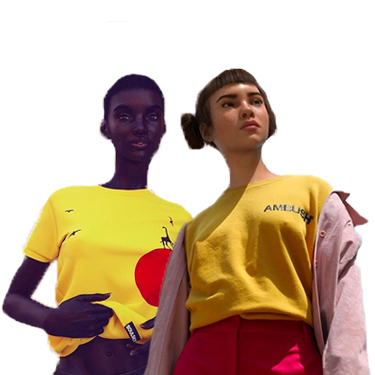In April, last year a photo of an unknown but uniquely beautiful model captured the minds of Instagram users and made people literally look for any information about her background in every corner. Her name is Shudu and it aroused passions among the followers. Who is she? How did she manage to embody such an amazing combination of inner and outer beauty?
Responding to such high attention of the users, she became even more popular. Earlier this year her Instagram picture showing the look for Rihanna’s Fenty lipstick, went viral and for now, the number of Shudu’s followers has surpassed 100 000 – @shudu.gram.
The Harper’s Bazaar publication dispelled all doubts and answered all questions: so, everybody learned that, in fact, Shudu is photographer Cameron-James Wilson’s project. He himself mentioned in several interviews that never intended to deceive the followers, and Shudu was initially an art project showing the embodiment of strength and beauty of the dark-skinned woman. Creating her image he was inspired by a Barbie doll, called Princess of South Africa as well as famous models and actresses, such as Alek Wek and Duckie Thot.
After realizing how popular Shudu was and how she influenced people on social media, Wilson decided to uncover her background and be absolutely honest to the followers announcing the fact that she was not a real person.
Shudu’s profile says that she is the first digital model, but it is not exactly how it really is. The first and most popular model to date is Miquela – @lilmiquela, whose number of followers has already exceeded one million and she is often pictured wearing Prada, Chanel, Supreme, Vans and other eminent brands. Miquela even has her own single Not mine which has become very popular on Spotify.
In some photos she looks very real and can be easily taken for a model whose pictures are photoshopped. In other pictures Miquela seems undoubtedely artificial, this is why debates on her personality flare up from time to time with no hope to die down.
Hype has been inflated by uncertainty. In March 2018 a BBC journalist communicated with Miquela by e-mail. Together with her, a Brud company representative participated in the interview. The company deals with “artificial intelligence, robotics, and media business apps issues”. He gave vague answers to several questions and uncovered no details, but it turned out that true fans are not really preoccupied. It is more important for her followers what ideas are behind her and how she acts: she inspires them and makes them better – and this is the most important thing about her. Very often the names of charity and social organizations (e.g., Black Lives Matter, Black Girls Code) can be spotted on Miquela’s profile and feed.
Popularity comes with responsibility. Shudu’s creator, a white man, is being blamed for making a “dark-skinned doll”, an author of The New York Times considers Miquela an example of morbid objectivization of women and fembot culture flourishing on social media.
Anyway, the career of both models is growing extremely fast. Thus, fashion industry representatives often contact Shudu’s creator offering business cooperation (he himself has not still decided if he is going to make money with it or not). And Miquela advertised the Prada autumn collection, notwithstanding as a rule real models do this for such the expensive brands.
You can say that if models are not real, everything related to their lives or work does not make sense at all. But in fact, it does not matter if a person is real or not if we see him or her only on the Internet. In this case, would you really care, if celebrities in the future will be virtual like Shudu and Miquela?




